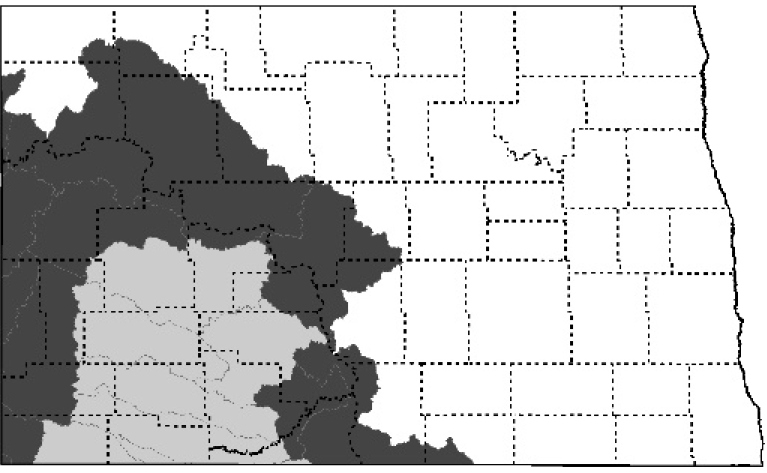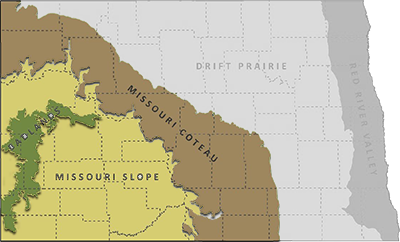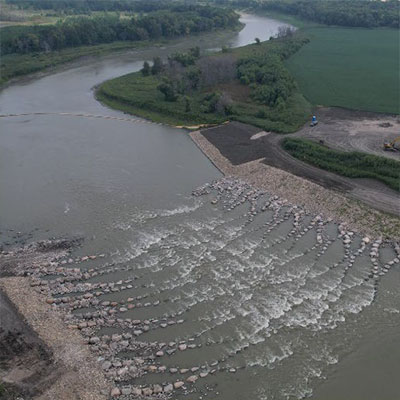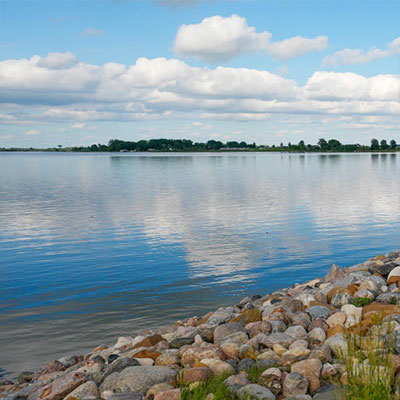Flathead Chub
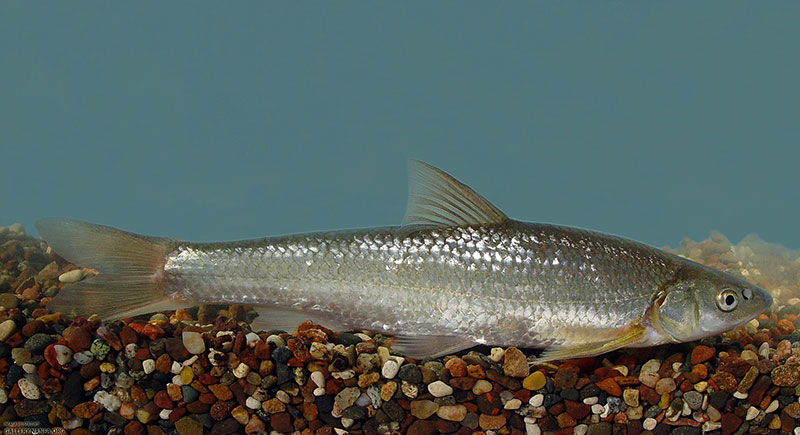
Konrad Schmidt
The flathead chub is a larger member of the Chub family, reaching a foot in length. It has a broad, flat head, tapering to a point. Its eye appears small compared to body size. Its color is dusky brown on top with silvery sides and has large sickle-shaped dorsal and pectoral fins. The first ray of the dorsal fin extends beyond last ray. It has a barbel in each corner of its mouth.
Status in North Dakota
Resident.
Reason for SWAP Designation
A native species to North Dakota. Major declines over much of its range have been documented.
Habitat loss is the main reason for this designation.
Impoundment and channelization of the Missouri river system has changed the slow moving, warm, turbid water to reservoir habitat.
Threats
The loss of habitat caused by a change in the riverine regime is the largest problem affecting this species.
Historically, flathead chub were present throughout the entire Missouri River System.
The construction of dams and channelization has largely changed the river system.
Dams have reduced the sediment load, in turn lowering turbidity.
The release of cold water from impoundments has lowered the overall temperature of the system, making much of the Missouri River too cold for flathead chub.
Dams have fragment populations by restricting movement.
Flathead chub now only occur in those areas that maintain qualities of the pre-impoundment system.
Research and Monitoring
- The states rivers and streams are surveyed for species on a 5-year rotating schedule.
- North Dakota DEQ staff survey rivers and streams through their Index of Biotic Integrity program.
Management Recommendations
- Continue to use the Section 404 program to ensures affected rivers and riparian areas are mitigated to replace form and function.
- Continue to work with other federal agencies not covered by 404 to ensure affected rivers and riparian areas are mitigated to replace form and function.
- Continue to work with NDSWC to develop instream flow recommendations.
- Promote incentive programs to restore riparian areas.
- Continue to work with ND 319 Task Force in prioritizing projects within impaired watersheds and implementing BMPs.
- Implement intake conditions or recommendations.
- Cooperate with NDGFD Fisheries staff on state aquatic nuisance species plans.
- Removal of dams and other barriers.
- Retrofitting dams with fish passage structures.

